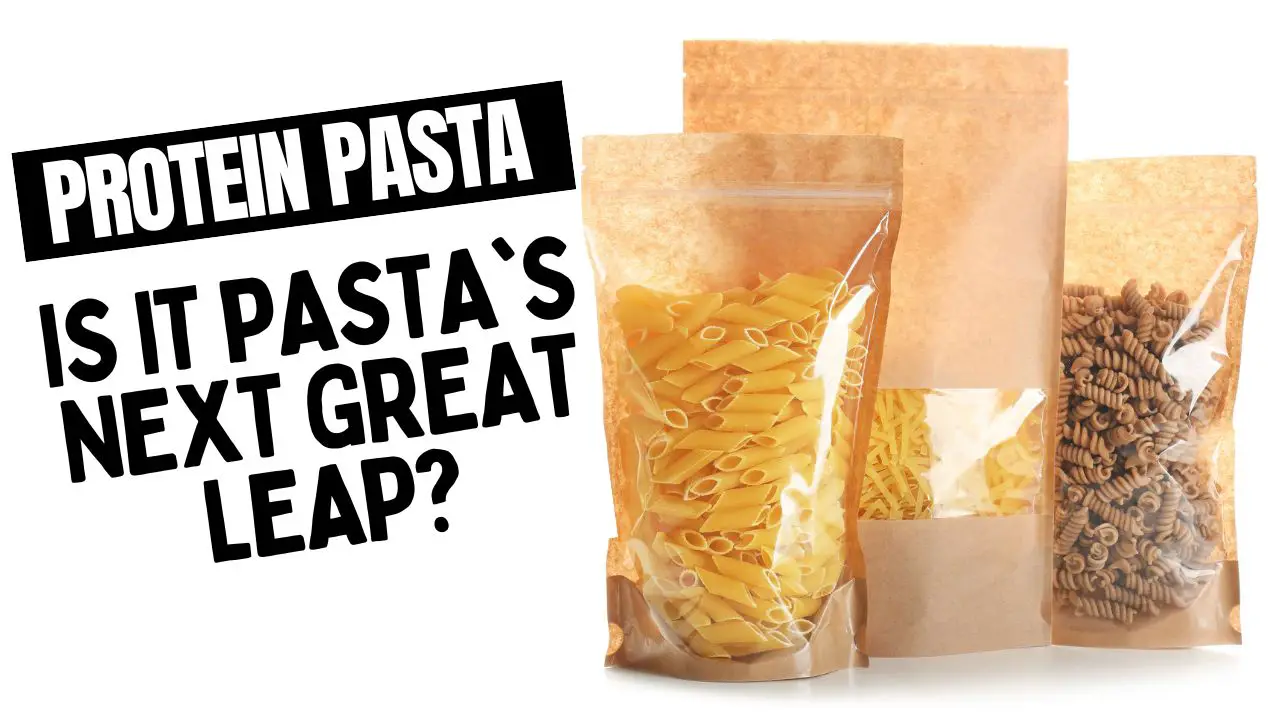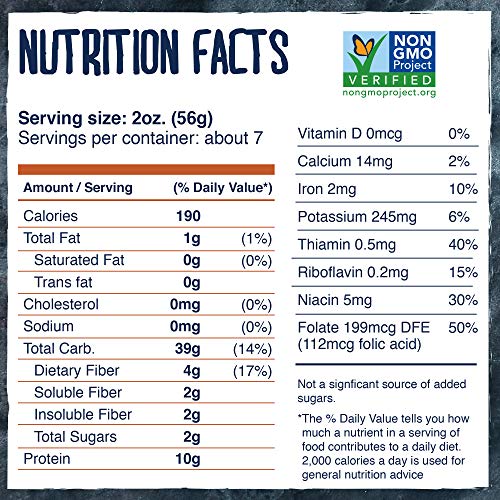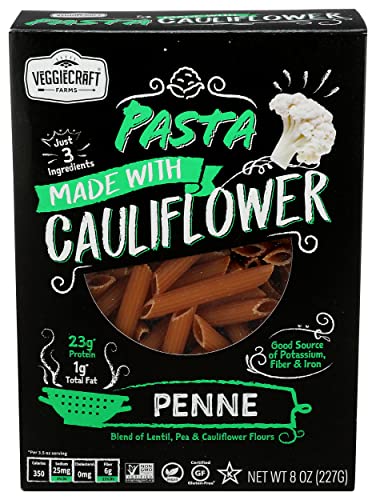In recent years, the popularity of high-protein diets has surged. Protein is an important nutrient that helps to build muscle and promote a healthy weight. So, if you’re embarking on a weight loss or fitness challenge, pasta is probably the last food you think of.
However, a new type of pasta, low in carbs and high in protein, is becoming increasingly popular. But is it just a horrible-tasting imitation, or can it match up to the lovely, delicate bite of classic pasta?
What Is Protein Pasta?
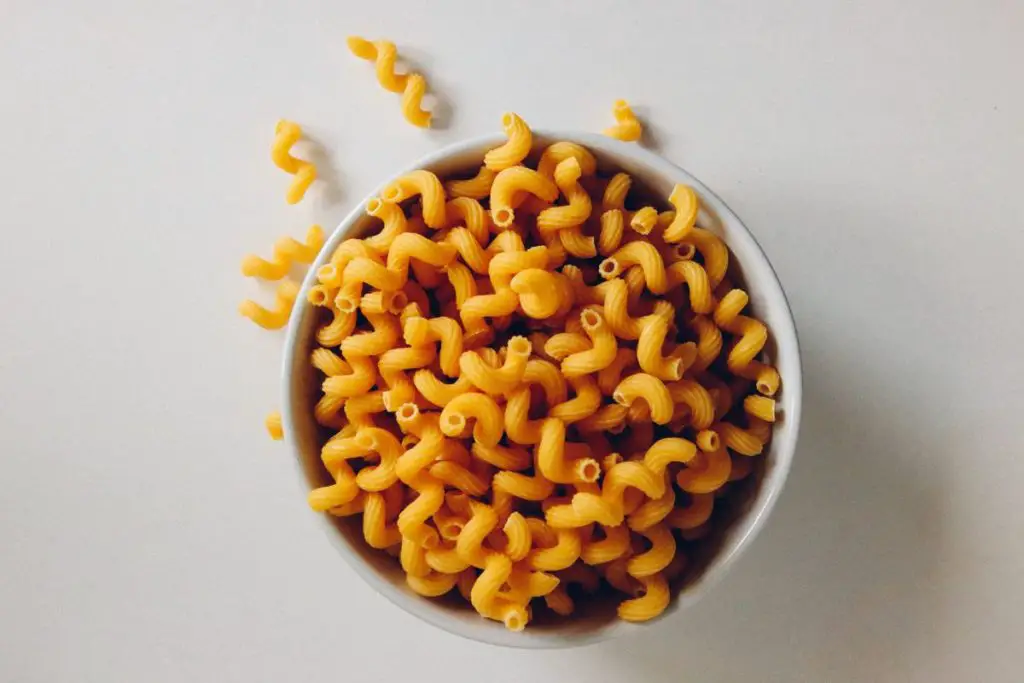
Protein pasta is a new, healthier alternative to traditional pasta. It is made from a variety of different proteins, including legumes, soy, and quinoa. It is high in protein and low in carbohydrates, making it a great choice for those who are looking to lose weight or build body definition.
It claims to be a perfect imitation of the pasta you know and love, from flavor to texture. However, there is not a single formula for protein pasta, so each brand has its particular take on the trend.
Like regular pasta, you can get it in different shapes and sizes like penne, ravioli, linguine, spaghetti, rigatoni, macaroni, farfalle, fusilli, cannelloni, ravioli, and many other different types.
What Is Protein Pasta Made Of?
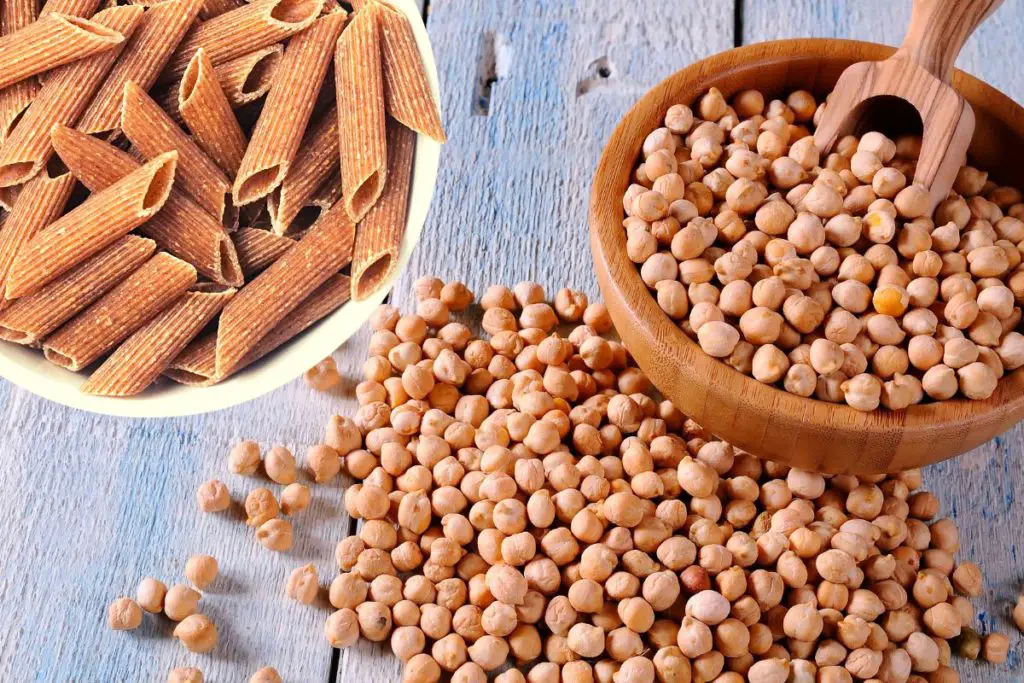
All protein pasta is plant-based and often features beans at the ingredients’ forefront, but not always.
Some of the most common ingredients are chickpeas, brown rice, black beans, lentils, and peas, often combined with other plant-sourced ingredients to mimic the texture, feel, and taste of regular pasta. For example, a common thickening agent in many brands is xanthan gum.
More often than not, protein pasta is also gluten-free and vegan. However, do keep in mind that protein pasta is an umbrella term, so each brand is free to create its own concoctions.
For example, some brands include wheat and barley flour to create a classic pasta texture, so make sure to read the ingredients list before purchasing.
What Does Protein Pasta Taste Like?
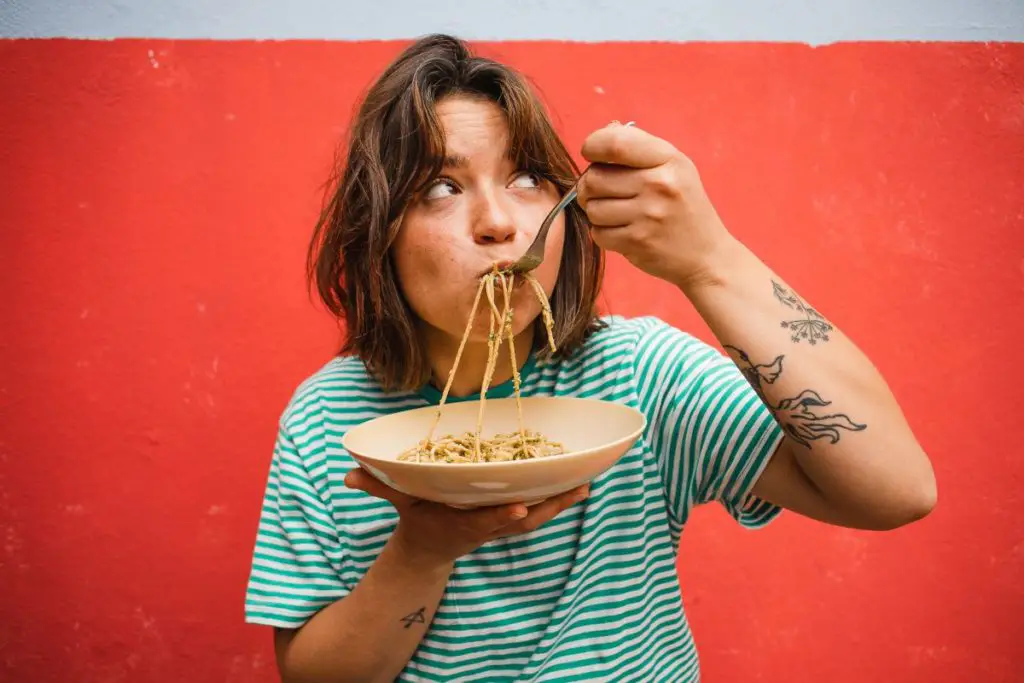
It is near impossible to generalize the taste of protein pasta, as it is not nearly as unified in production methods as traditional pasta. In short, there are as many flavors as there are brands—some inching closer to the classic taste and others rejoicing in their uniqueness.
Certain protein pasta manufacturers opt to incorporate beans into the classic mixtures of semolina and wheat, making them closely resemble traditional pasta in flavor and taste.
However, other brands opt to depart from this combination to create wholly gluten-free and vegan options, which leads to their own unique flavor profiles.
Chickpea protein pasta tends to be starchier and slightly gummier than its standard counterpart, with the slightest sweetness. Red lentil protein pasta has a strong bean flavor, unlike classic pasta, while green lentil is milder and less overwhelming.
Overall, do not expect protein pasta to taste like regular pasta. It is made with different ingredients, and subsequently, it will taste like them. Of course, that does not have to be a bad thing—just be aware of the difference to avoid unpleasant surprises.
Is Protein Pasta Healthy?
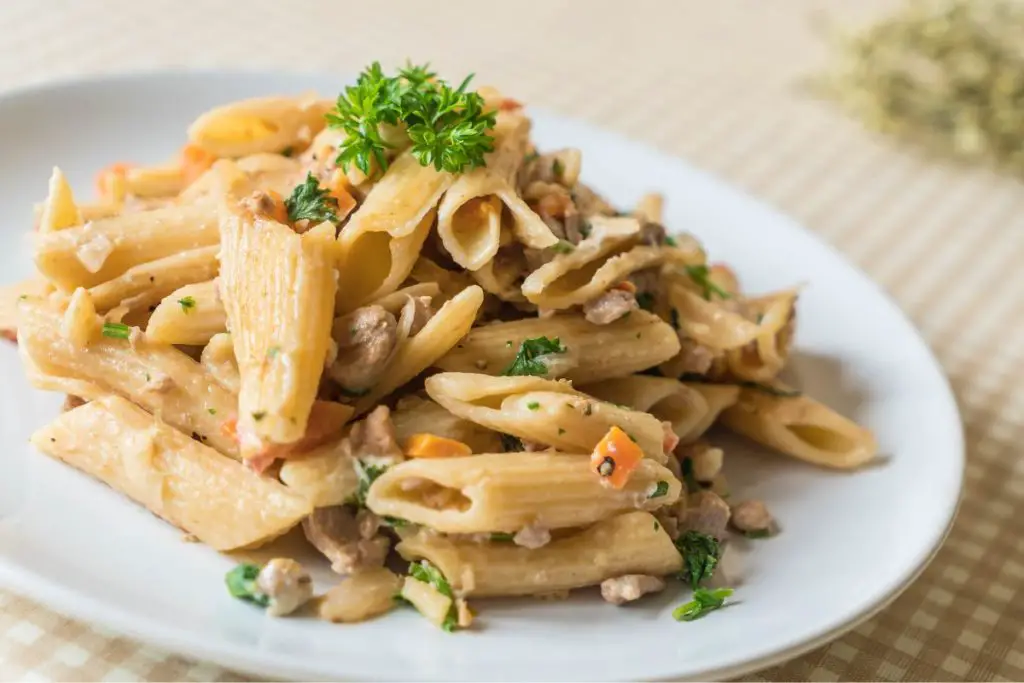
The nutritional value of protein pasta should always be considered in relative comparison to other meals. In that regard, protein pasta is much healthier than traditional pasta, yet it does not compare to the whole foods it is made of.
Traditional pasta is high in carbohydrates and gluten. Likewise, it may not be made entirely out of empty calories, but it also has a somewhat low nutritional value since most pasta is highly refined, which means it is also low in fiber [1].
By comparison, protein pasta has a near-identical number of calories per serving as traditional pasta, yet most of it is made of protein and fiber. For example, classic pasta tends to have 6 g of protein per 100g serving. In comparison, an identical serving of protein pasta has an average of 22g of protein—plus 19g of fiber [2].
However, remember that protein pasta does not replace the beans and vegetables it is made of. A single vegetable serving contains more protein and nutrients than several servings of protein pasta due to its processed nature [2].
Who Benefits From Eating Protein Pasta?
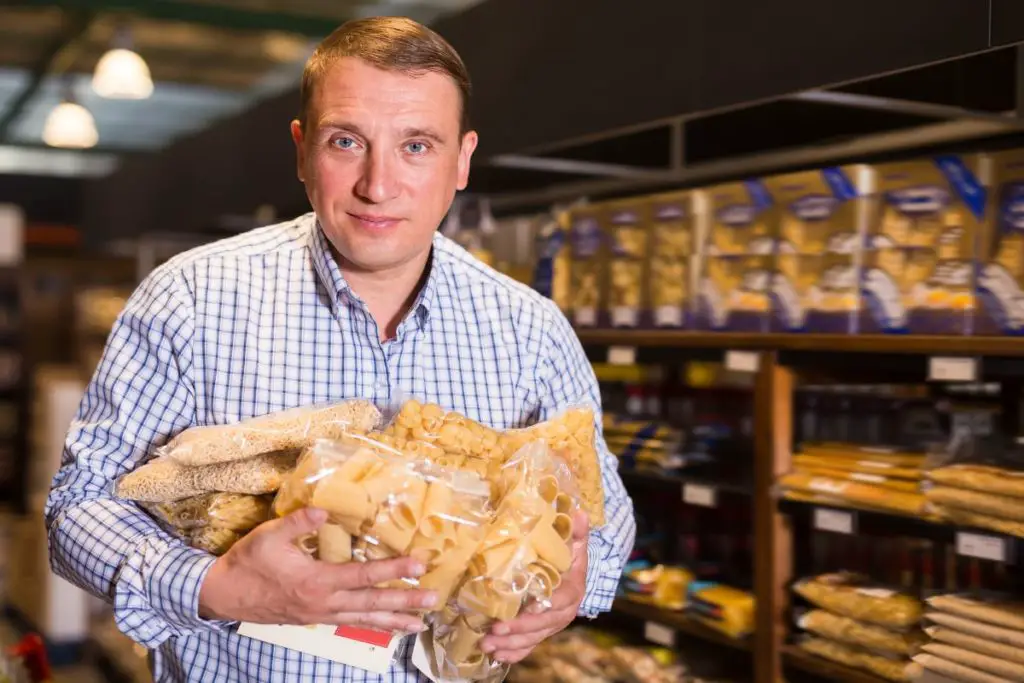
Protein pasta is overwhelmingly considered healthy, at least in comparison to its traditional counterpart. However, there are nuances to consider before buying an entire stock’s worth of chickpea penne.
There are several groups of people who can benefit from incorporating protein pasta into their diets. First, athletes and bodybuilders need to consume large amounts of protein to build and maintain muscle mass. Protein pasta is an excellent source of protein for those on a high-protein diet.
Also, people with gluten intolerance, vegetarians and vegans, and folks who like to eat a lot of pasta but want to cut down on their carb intake [3].
Vegetarians and vegans lack animal protein. Therefore, they require varied sources of plant proteins to acquire all the essential amino acids. In such cases, they can definitely benefit from different types of protein pasta, particularly quinoa, since it contains all nine amino acids [2].
People on weight loss diets that require high protein can also benefit from replacing regular pasta with protein pasta, as it can aid in building muscle mass and replace carbs with a caloric intake more in-line with their weight loss goals.
How Do To Cook Protein Pasta?

Sadly, there is not a universal answer to this question. Although protein pasta more-or-less follows the same steps expected from cooking traditional pasta, each protein brand has its unique instructions in the box. Your best bet is to follow the cooking instructions that each brand suggests.
However, remember that most protein pasta tends to be somewhat starchy. Subsequently, you may need to rinse them after cooking to prevent residue from sticking to the noodles.
Some Of The Best Protein Pasta Brands With The Most Protein
The best protein pasta brands vary depending on who you ask. After all, there is plenty of variety, which is also down to personal taste. However, below I will give you four options that I like and use quite often and all of which provide you with a good amount of protein.
Banza Chickpea Pasta
TAP ON IMAGE TO VIEW PRICE
As one of the original protein pasta brands in the market, Banza has withstood the test of time thanks to its exceptional quality. This gluten-free option has a neutral flavor and absorbs sauce very well, making it a favorite among consumers.
It is made of chickpeas and gives you around 20g of protein per 3.5 oz (99 g) serving.
It comes in many different varieties like elbows, rotini, penne, shells, rigatoni, wheels, ziti, Gemelli, linguini, spaghetti, and many more.
It takes about 7-9 minutes to achieve quite a perfect firmness.
Read More Here: Chickpea Pasta vs Regular Pasta – Is It Worth The Hype?
Barilla Protein+
TAP ON IMAGE TO VIEW PRICE
Although it is not gluten-free, Barilla Protein+ is the protein pasta that most closely resembles the traditional one.
Barilla Plus is an excellent source of both protein and vitamins, as it is made of flax seeds and legumes. Because of its higher protein content, I have noticed that Barilla Plus takes a few extra minutes to cook than my classic pasta. So, aim for a cooking time of about 10-11 minutes.
As you can see, a 2oz (56g) serving gives you a staggering 10g of protein.
It also comes in many varieties and pairs well with tomato-based sauce and sauces with an abundance of fresh vegetables.
It is the best option for those seeking the most similar taste and texture to classic pasta.
The Only Bean
TAP ON IMAGE TO VIEW PRICE
All The Only Bean pasta options have incredibly high protein levels—44g per 3.5oz (99g) serving—and are very low on carbs. This makes the brand a favorite choice for athletes and those aiming to increase protein consumption significantly.
Black Bean Spaghetti Pasta is Made 100% from beans; it contains no flour or wheat and no, eggs or any binding agents. I love it because it is also organic and super low in carbs making it Keto friendly. It is also gluten-free.
It only takes about 5 minutes to cook.
Veggiecraft Farms Cauliflower Pasta
TAP ON IMAGE TO VIEW PRICE
Made with cauliflower, lentil, and peas, this high-protein option is vegan, gluten-free, and high in fiber—as expected from such a great list of ingredients.
It is not really my favorite as it certainly has a unique taste and has more carbs than the other option above. But it is still a popular choice because it is minimally processed, has a lot of fiber, and is full of protein, 13g per 2oz (56g), to be exact.
It also cooks quite fast; about 8-10 minutes gives you a nice texture.
In Conclusion
Protein pasta is a good alternative to regular pasta. It is higher in protein and lower in carbohydrates, making it a healthier choice for those looking to lose weight, build muscle, and maintain a healthy lifestyle. It also contains more fiber, vitamins, and minerals than conventional pasta, and most of the brands are vegan and gluten-free.
Watch Also
Sources:
- [1] Link, Rachael. (2017). Is Pasta Healthy or Unhealthy? Retrieved from https://www.healthline.com/nutrition/is-pasta-healthy
- [2] Meyer, Adam (2022). Which Plant-Based Pasta Is The Healthiest? Experts Weight In. Retrieved from https://thebeet.com/which-plant-based-pasta-is-the-healthiest-experts-weigh-in/
- [3] Manaker, Lauren (2022). 12 High/Protein Pastas That’ll Leave You Satisfied For Hours. Retrieved from https://www.shape.com/healthy-eating/diet-tips/high-protein-pastas
Read Also: How To Use Pesto From A Jar With Pasta? (Easy And Delicious).
